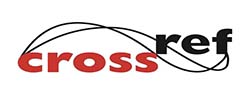Author: Dimou Charalampia, Koutelidakis E. Antonios, Mavropoulou Rafaela, Argyrios Skiadaresis, Karantonis Haralabos, Stavros Yanniotis, Dimou Charalampia
Keyword: cheese whey, applied biosciences, biotechnology, carotenoids, ergosterol, optimized processes, research and development.
Abstract: The increasing industrial demand for the production of innovative functional food (lactose free products) as well as bio-compounds with nutritional value (such as carotenoids and other metabolites like ergosterol), that could find several applications in industrial food sector (Research and Development department) has increased interest regarding their potential production (employing applied biochemistry and biotechnology principles in their optimized production processes). Reduction of total production costs has encouraged the usage of low-cost or negative valued agroindustrial by-products or waste streams to industrial food sector. Cheese whey (after being deproteinized) was treated, either with acid (HCL) or commercial β-galactosidase (from Aspergillus oryzae), aiming at hydrolyzing initial lactose contained in a unique mixture of cheese whey, delivered by different cheese whey making processes, from Aegean islands (Greece). Regarding HCL (37% vv-1) catalyzed hydrolysis of unique Aegean islands (Greece) delivered cheese whey, the highest glucose concentration of 3873.66 mgL-1 achieved after 120 min of reaction, at 100 oC at a pH range ranking from 1 to 1.1. As for enzymatic catalyzed hydrolysis process of cheese whey, using β-galactosidase (from Aspergillus oryzae), maximum production of 18.78 gL-1 glucose, achieved at 55 oC and pH= 5, after 12 hours of enzymatic hydrolysis (when the initial cheese whey concentration and initial enzymatic activity was 1200 gL-1 and 9 UmL-1, respectively). Evaluating potential usage of cheese whey hydrolysates in industrial food sector, it was concluded that a 6h enzymatic process was adequate for the production of glucose-rich streams, that could find several applications toward the production of novel functional foods (free of lactose or low lactose content), improving their sensorial and technological properties (while addressed to those suffering from lactose intolerance). Regarding bioreactor fed-batch bioconversions by Rhodotorula glutinis, using enzymatically prepared cheese whey hydrolysates as generic feedstock (with initial glucose concentration of 18 g L-1), the highest production of total carotenoids, ergosterol and total dry weight achieved was 127.3 ± 0.41 μg g-1 (or 2023.03 ± 0.41 μgL-1), 170.78 ± 0.38 μg g-1 (or 2703.917 ± 4.37 μgL-1), respectively. The flow aeration rate was maintained at 2vvm. regulated by using 5M NaOH and 10% (vv-1) H2SO4, at optimum range (6.2-6.5). The dissolved oxygen concentration at the bioreactor, was regulated at 30% of saturation. Cheese whey, a by-product of cheesemaking process, could form an ideal feedstock through the designing and development of optimized series of bioprocesses leading to the development of a novel biorefinery that could produce several value-added products with high nutritional value and several commercial marketed outputs.
| Total View: 1665 | Downloads: 699 | Page No: 529-538 |
Cite this Article:
MLA
Dimou Charalampia, Koutelidakis E. Antonios, Mavropoulou Rafaela, Argyrios Skiadaresis, Karantonis Haralabos, Stavros Yanniotis, Dimou Charalampia, P.(2019).Using Cheese whey for the Production of Carotenoids, Ergosterol and Novel Functional Foods of Industrial interest though a series of Optimized bio- and Chemical- Processes. International Journal of Environment Agriculture and Biotechnology(ISSN: 2456-1878).4(2), 529-538.10.22161/ijeab/4.2.38
Dimou Charalampia, Koutelidakis E. Antonios, Mavropoulou Rafaela, Argyrios Skiadaresis, Karantonis Haralabos, Stavros Yanniotis, Dimou Charalampia, P.(2019).Using Cheese whey for the Production of Carotenoids, Ergosterol and Novel Functional Foods of Industrial interest though a series of Optimized bio- and Chemical- Processes. International Journal of Environment Agriculture and Biotechnology(ISSN: 2456-1878).4(2), pp.529-538.
Dimou Charalampia, Koutelidakis E. Antonios, Mavropoulou Rafaela, Argyrios Skiadaresis, Karantonis Haralabos, Stavros Yanniotis, Dimou Charalampia. 2019."Using Cheese whey for the Production of Carotenoids, Ergosterol and Novel Functional Foods of Industrial interest though a series of Optimized bio- and Chemical- Processes". International Journal of Environment Agriculture and Biotechnology(ISSN: 2456-1878).4(2):529-538.Doi:10.22161/ijeab/4.2.38
Dimou Charalampia, Koutelidakis E. Antonios, Mavropoulou Rafaela, Argyrios Skiadaresis, Karantonis Haralabos, Stavros Yanniotis, Dimou Charalampia."Using Cheese whey for the Production of Carotenoids, Ergosterol and Novel Functional Foods of Industrial interest though a series of Optimized bio- and Chemical- Processes", International Journal of Environment Agriculture and Biotechnology,vol.4,no. 2, pp.529-538,2019.
@article { dimoucharalampia2019using,
title={Using Cheese whey for the Production of Carotenoids, Ergosterol and Novel Functional Foods of Industrial interest though a series of Optimized bio- and Chemical- Processes},
author={Dimou Charalampia, Koutelidakis E. Antonios, Mavropoulou Rafaela, Argyrios Skiadaresis, Karantonis Haralabos, Stavros Yanniotis, Dimou Charalampia , R},
journal={International Journal of Environment Agriculture and Biotechnology},
volume={4},
year= {2019} ,
}
























